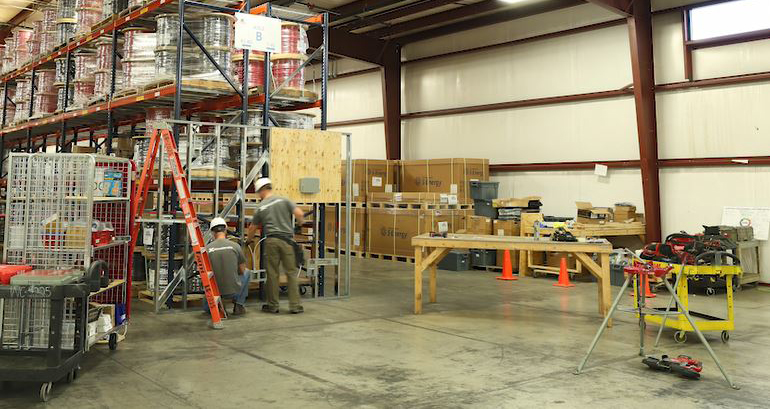June 19, 2019 Hiram Harris
The Role of a Front-Line Leader: Establishing a Continuous-Improvement Framework
The success of an organization is dependent upon numerous factors: strategic deployment, organizational capability and alignment, robust business processes and a sound infrastructure, to name a few. Each of these are related by their dependency on people and culture to drive their performance and success.
A common mantra—not just in manufacturing, but within every company—is that people are an organization’s greatest resource. Front-line leadership is one of many integral resources that aid in the success of organizations.
The roles and responsibilities of a front-line leader are too extensive to list in a job description, but in simplest terms, he/she must focus on two things: (1) executing processes; and (2) improving processes. This may include safety, quality, delivery, inventory and cost/productivity processes, among others; and generally in that order of importance.
Executing and improving processes; sounds easy enough, right? How does a front-line leader accomplish this, however? Three things can help shape a front-line leader’s Leader Standard Work, and should all be with the intent of engaging people in problem solving and continuous improvement:
- Transition Teams from Home to Work: This may include shift prep and hand-off, daily safety briefings, stretch and flex programs, restructuring talent and assignments, and reviewing shift start-ups and daily accountability / management.
- Create Relationships and Focus on Developing the People: This may include a cross-training plan/training matrix, creation of functional area champions or subject matter experts, special assignments, structured problem solving, rapid-improvement events (RIEs) or Kaizen activities and performance evaluations.
- Checking the Process: Check the process… and check the process… and oh, by the way – check the process again! This important step may include quick process checks (buzzer-to-buzzer checks around man-machine-method-material), visual controls, detailed process checks and 5S.
Once a front-line leader has established a strategy to execute a process, how do they go about improving it? Many companies have their own version of a Lean program or continuous-improvement process, but listed here are some concepts to build upon:
- Process Standardization: Documenting and following the best-known method, to ensure consistency and capture organizational learning
- Visual Controls: Designing work and tools to make abnormal conditions visible, to stimulate action to keep processes in control
- Process Checks: Ensuring strict adherence to the standard method by systematically checking for conformance
- Leader Standard Work: Establishing consistent leader process focus, creating cadence and providing a teachable point of view
- Daily Accountability: Layered management review structure that facilitates immediate elevation of problems, ensuring resource allocation and accountability to address problems with urgency
- Manning Strategy: Organizational structure and people systems aligned with the operational strategy, including work team design, leader ratios, back-up leaders, cross-training and flexing strategies that support “stop & fix”
- Gemba Walks: Going to where the work is done, observing the current condition and redirecting and stimulating a higher level of thinking about process design and effectiveness
- Management Systems: Management systems designed to engage the people who do the work in structured problem solving, improving their standard work
In the end, having a culture of learning and continuous improvement that anticipates, develops and deploys safe and sustainable manufacturing processes and systems (which deliver products and services on-time, to specification, at cost, within budget and with predictability) will ensure that an organization is built upon manufacturing excellence.
Creating an environment where there’s a strong emphasis on hiring solid front-line leadership and creating a sound continuous-improvement framework, like we have at Excellerate, is part of the secret of creating a fast learning culture, and gives an organization a competitive advantage in the marketplace.
Interested in learning more? Check out our other articles and subscribe to be the first to know about future Excellerate blog articles.

 The Role of a Front-Line Leader: Establishing a Continuous-Improvement Framework
The Role of a Front-Line Leader: Establishing a Continuous-Improvement Framework

